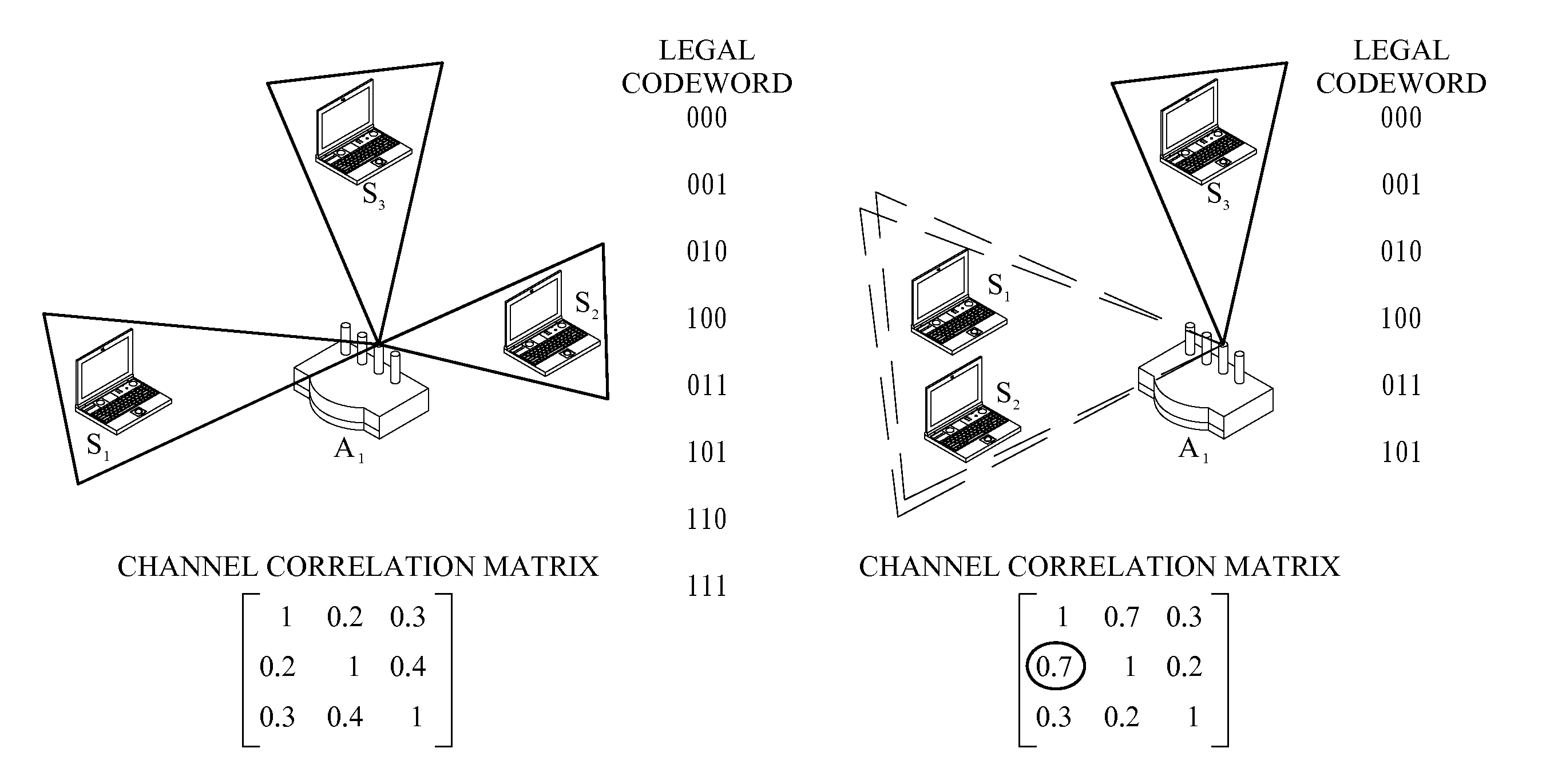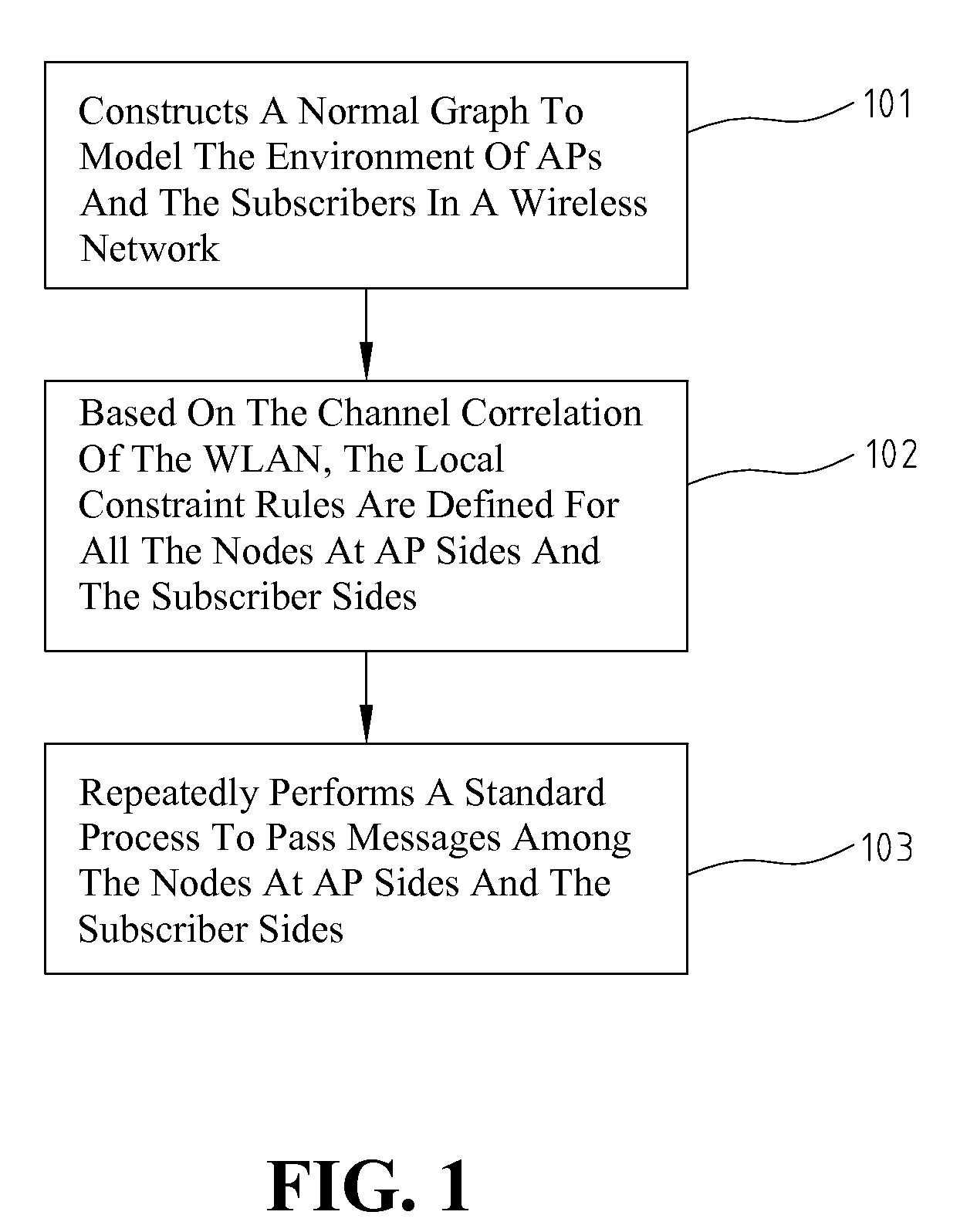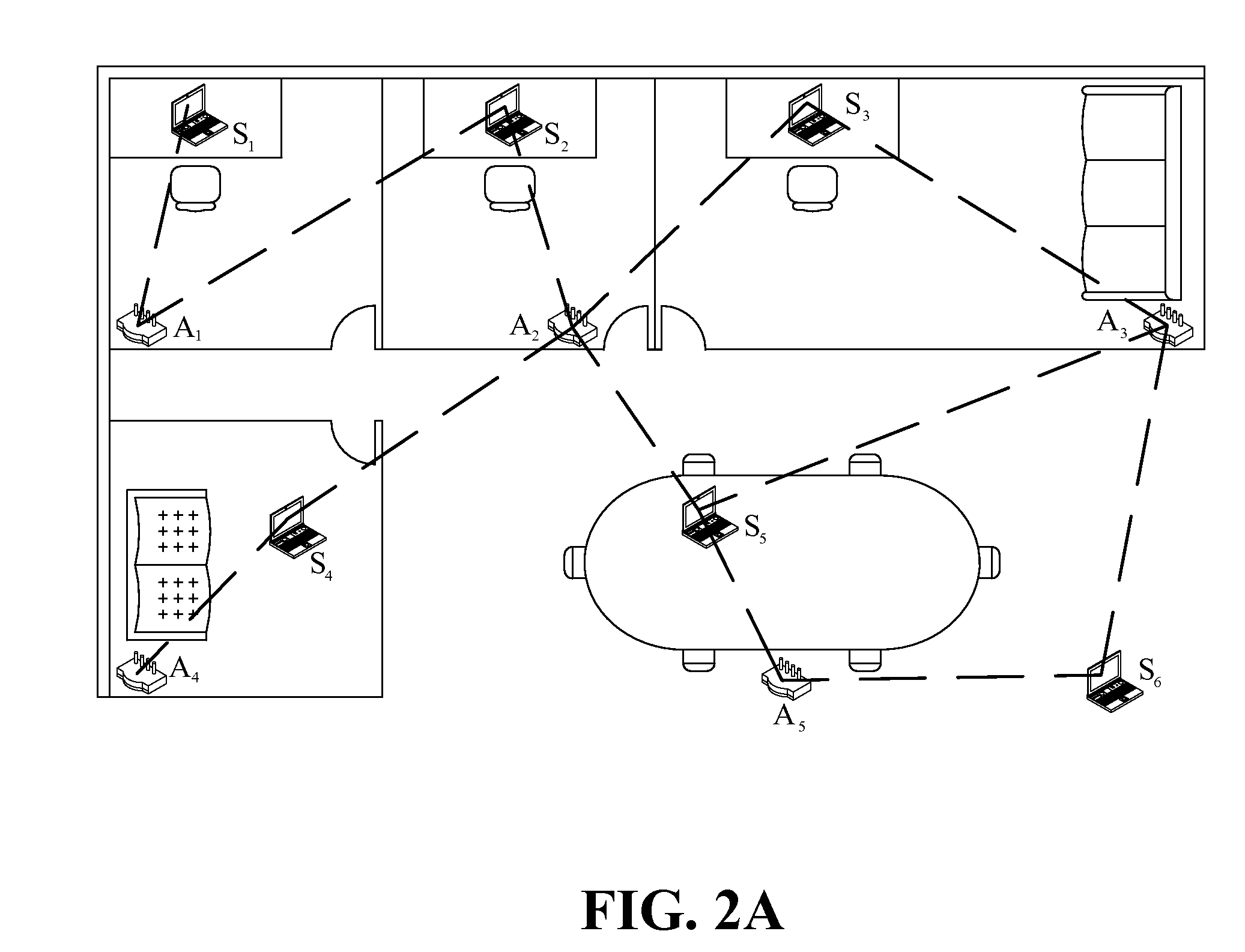Method And Apparatus Of Dynamic Channel Assignment For A Wireless Network
a wireless network and dynamic channel technology, applied in the field of dynamic channel assignment for wireless networks, can solve the problems of poor performance, simple fca method, and mutual interference between aps
- Summary
- Abstract
- Description
- Claims
- Application Information
AI Technical Summary
Benefits of technology
Problems solved by technology
Method used
Image
Examples
Embodiment Construction
[0021]The normal graph was originally used in the decoding process in a communication system. By observing the log-likelihood ration (LLR) exchange in a normal graph and the characteristics of normal graph discrete operation, the present invention transforms a complicated DCA problem into a decoding problem.
[0022]The present invention observes that as long as a normal graph framework can be used to model the DCA problem, the local rule for all the nodes in the normal graph are well-defined and uses the message-passing through the pre-assigned local agents, the DCA problem can be easily solved with a standard process.
[0023]FIG. 1 illustrates the operating steps of the DCA method according to the invention. As shown in step 101, the method constructs a normal graph to model the environment of APs and the subscribers in a wireless network. The normal graph includes a plurality of nodes at AP sides, a plurality of nodes at subscriber sides, and a plurality of edges. The normal graph is ...
PUM
 Login to View More
Login to View More Abstract
Description
Claims
Application Information
 Login to View More
Login to View More - R&D
- Intellectual Property
- Life Sciences
- Materials
- Tech Scout
- Unparalleled Data Quality
- Higher Quality Content
- 60% Fewer Hallucinations
Browse by: Latest US Patents, China's latest patents, Technical Efficacy Thesaurus, Application Domain, Technology Topic, Popular Technical Reports.
© 2025 PatSnap. All rights reserved.Legal|Privacy policy|Modern Slavery Act Transparency Statement|Sitemap|About US| Contact US: help@patsnap.com



